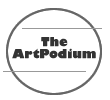 Rene
Magritte was born in Lessines, Belgium, on 21 November 1898. At the age
of twelve he began taking art classes in Chatelet, where he and his family
had just moved to. Painting had always seemed "vaguely magical"
to Magritte, who was an average student in school. After quitting high
school, he enrolled in 1916 at the Academie des Beaux-Arts in Brussels
where he followed the classes of drawing, Decorative Painting and Ornamental
Composition. Landscapes showing the Sambre river in which his mother had
killed herself in 1912, were among his first works.
Rene
Magritte was born in Lessines, Belgium, on 21 November 1898. At the age
of twelve he began taking art classes in Chatelet, where he and his family
had just moved to. Painting had always seemed "vaguely magical"
to Magritte, who was an average student in school. After quitting high
school, he enrolled in 1916 at the Academie des Beaux-Arts in Brussels
where he followed the classes of drawing, Decorative Painting and Ornamental
Composition. Landscapes showing the Sambre river in which his mother had
killed herself in 1912, were among his first works.
Magritte's best friend at the time was the young poet Pierre Bourgeois, of whom he made
several portraits. They became interested in modernity and the Italian
Futurists and invited Theo van Doesburg to give a lecture on
the Dutch movement 'The Style'.
In 1920, Magritte's first Futurist-inspired paintings were exhibited along
with works by the painter Pierre Flouquet. Pure geometric abstraction,
which had its roots in the Northern countries, seemed too radical to Magritte
who began to search for a different pictorial language, this time finding
it under the influence of Cubism and Futurism.

The year of 1922 meant a lot for Magritte. In 1922 Magritte got married with Georgette Berger, whom he had met at the age
of fifteen and met again at in 1920. Magritte was inspired by Georgette and she became his model. He also became friendly with Victor Servranckx,
who had developed a very personnel geometric-abstract style. This was the beginning of a new direction for Magritte.
 His
first really outstanding works date from 1922-1923 and are characterized
by Cubo-Futurist reminiscences and the pleasure of a very sensual representation
in which women and colors are the dominant elements. He had realized that
resorting to abstraction had not enabled hum to 'make reality manifest.'
What he wanted was to establish a disturbing relationship between the
world and objects. Therefore, toward 1925, he decides "
His
first really outstanding works date from 1922-1923 and are characterized
by Cubo-Futurist reminiscences and the pleasure of a very sensual representation
in which women and colors are the dominant elements. He had realized that
resorting to abstraction had not enabled hum to 'make reality manifest.'
What he wanted was to establish a disturbing relationship between the
world and objects. Therefore, toward 1925, he decides " only to paint objects with all their visible details". By placing them
in situations which were unfamiliar to the spectator, he would "challenge
the real world". Magritte abandoned the plastic qualities of pictorial art in favor of a more remote, colder style that portrayed images from
which all aestheticism had to be banished.
only to paint objects with all their visible details". By placing them
in situations which were unfamiliar to the spectator, he would "challenge
the real world". Magritte abandoned the plastic qualities of pictorial art in favor of a more remote, colder style that portrayed images from
which all aestheticism had to be banished.
One of the first works to display this change was Nocturne (1925). The work contains element from the  iconography that Magritte created at the time and which he used throughout his life: the painting within a painting, the bird in flight, and fire,
adding to the stage curtain an to the wooden bilboquet. These last two elements are also at the heart of The
last Jockey (1926) which, according to Magritte, was a critical milestone in his entry into Surrealism.
It gave him a mysterious feeling, an anxiety without reason. The feeling of anxiety, which manifested itself in dark tonalities, lugubrious shapes
and mysterious juxtaposition of objects, invaded a large number of works from these years.
iconography that Magritte created at the time and which he used throughout his life: the painting within a painting, the bird in flight, and fire,
adding to the stage curtain an to the wooden bilboquet. These last two elements are also at the heart of The
last Jockey (1926) which, according to Magritte, was a critical milestone in his entry into Surrealism.
It gave him a mysterious feeling, an anxiety without reason. The feeling of anxiety, which manifested itself in dark tonalities, lugubrious shapes
and mysterious juxtaposition of objects, invaded a large number of works from these years.
To be continued .....


